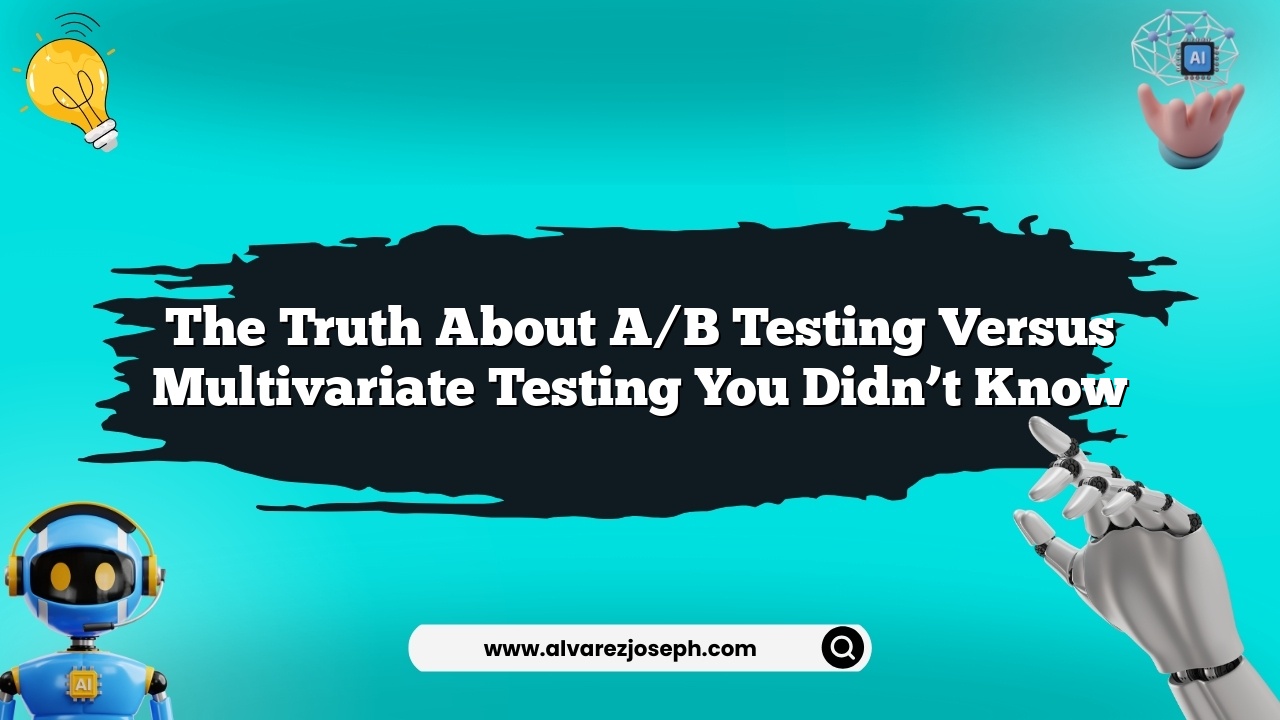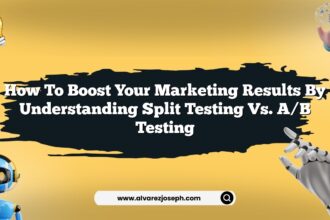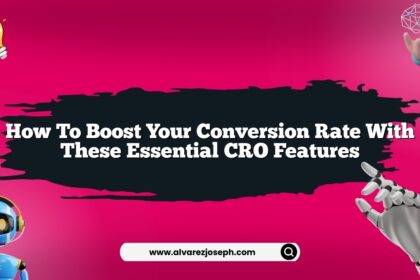Alright, let’s dive into the nitty-gritty of A/B testing and multivariate testing. These terms get thrown around a lot, but do you really know what they mean? If you think they’re just fancy phrases for the same thing, think again! There’s more going on here than meets the eye…
Stick with me, and by the end, you might see these testing methods in a whole new light. I’m about to break down the truth about A/B testing versus multivariate testing. And trust me, you’ll want to know the differences.
What Is A/B Testing Anyway?
Let’s break it down. A/B testing is pretty straightforward. You take two versions of something—could be a webpage, an email, whatever—and see which one performs better. Think of it like a showdown. You’ve got Version A on one side and Version B on the other.
- You’re measuring clicks…
- Sales…
- Sign-ups…
You pick the winner based on the data. Easy, right?
But here’s a little secret: A/B testing doesn’t just help with big decisions. It’s also useful for tweaking small details—like changing the color of a button or rewording a headline. I’m telling you, those tiny changes can lead to massive wins!
Multivariate Testing: The Overachiever
Now, let’s talk about multivariate testing. This one can get a little wild. Unlike A/B testing, where you’re looking at just two versions, multivariate testing lets you test multiple variables at the same time. So instead of just two webpages, you could be testing four, five, or even more…
Imagine you’ve got a webpage with a header, a button, and an image. In multivariate testing, you can change each of those elements—mixing and matching them to see which combination performs best.
It’s a bit like a buffet rather than a single plate of food. You’re sampling everything at once…
Pros and Cons: Let’s Get Real
Now, I’m not here to sugarcoat anything. Both A/B and multivariate testing have their ups and downs.
A/B Testing Pros:
- Simplicity: It’s clear-cut. You know exactly what you’re testing.
- Speed: You can get results quickly, especially if you have a decent amount of traffic.
- Focus: You’re only changing one thing, so it’s easy to pinpoint what works.
A/B Testing Cons:
- Limited Scope: You can only test one variable at a time. It can feel a bit slow.
- Less Insight: You might miss out on how different elements interact together.
Multivariate Testing Pros:
- Comprehensive: You get to see how different elements work together.
- Efficiency: Testing multiple things at once can speed up your optimization process.
Multivariate Testing Cons:
- Complexity: It can get messy with too many variables. You need to be careful.
- Traffic Requirements: You need a lot of traffic to get reliable results. Otherwise, it’s like throwing darts blindfolded.
When to Use Which?
Here’s the million-dollar question… when should you use A/B testing, and when should you bust out the multivariate testing?
If you’re a newbie or working with limited traffic, keep it simple. Go with A/B testing. You’ll get quicker results and a straightforward path to improvement.
But once you’ve got a good amount of traffic and you’re looking to optimize multiple elements… that’s when you can start playing around with multivariate testing. Just don’t forget the golden rule: don’t overwhelm yourself by testing too many things at once!
Real-World Example
Let me share a quick story. A friend of mine runs an online store. They wanted to improve sales on a product page.
They started with A/B testing. They changed the button color from red to green. Guess what? Sales went up by 20%!
But they didn’t stop there. They decided to try multivariate testing. They tested the button color, the product description, and the image all at once. After a few weeks, they found out that a green button with a specific image and a slightly different description outperformed everything else.
It’s a simple story, but it highlights how both testing methods can work wonders!
Key Differences at a Glance
To make this easier, here’s a quick comparison table for you.
| Feature | A/B Testing | Multivariate Testing |
|---|---|---|
| Number of Variants | Two | Multiple |
| Complexity | Simple | Complex |
| Time Required | Quick | Longer |
| Best For | Single element changes | Interactions of multiple elements |
| Traffic Needs | Moderate traffic | High traffic |
The Bottom Line
So, what’s the takeaway? A/B testing is like a simple tool in your toolbox. It’s effective for quick fixes and clear results. Multivariate testing? It’s the Swiss Army knife—powerful but requires a little more finesse.
Both have their place in your toolkit. Just remember to use them wisely!
Quick Summary
- A/B testing is straightforward; you test two variations.
- Multivariate testing allows for testing multiple elements at once.
- A/B testing is great for small changes.
- Multivariate testing is useful for understanding complex interactions.
- Start with A/B testing if you’re new to optimization.
- Use multivariate testing when you have enough traffic.
- Both methods can lead to significant improvements.
- Analyze data thoroughly to make informed decisions.
- Don’t forget about user experience; optimization shouldn’t sacrifice it.
- Keep experimenting!
Frequently Asked Questions
What’s the main difference between A/B testing and multivariate testing?
A/B testing compares two versions of a single element, while multivariate testing examines multiple elements simultaneously. A/B testing is more straightforward, while multivariate testing allows for richer data.
How much traffic do I need for multivariate testing?
You typically need a higher volume of traffic—think thousands of visitors—to get reliable results. If your traffic is low, stick with A/B testing for now.
Can I use both methods together?
Absolutely! Many organizations start with A/B testing to refine their elements and then switch to multivariate testing as they gather more data and refine their approach.
How do I know which method to use?
Consider your goals and traffic levels. If you’re new or have low traffic, A/B testing is the way to go. If you have consistent traffic and want to optimize multiple elements, try multivariate testing.
What tools can help with these tests?
There are several robust tools out there like Google Optimize, Optimizely, and VWO. Each has its own strengths, so check them out and see what fits your needs!
How long should I run a test?
Run a test for at least a week—longer if your traffic is low. The more data, the better! Just keep in mind that seasonal changes can affect results, so plan accordingly.
So, there you have it. The truth about A/B testing versus multivariate testing. I hope you feel more informed and ready to tackle your conversion optimization journey!












